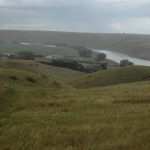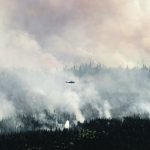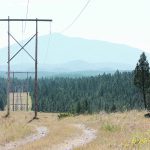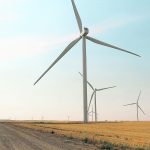The International Energy Agency recently forecast that renewable energy will become the top source of electricity generation in the world next year.
Stories by Robert Miller

Coal mine threat returns to Alta.’s eastern slopes
The author argues the landscape, the water and the gross domestic product of agriculture in southern Alberta are worth defending.

Doubling down on oil expansion is short sighted
A new analysis from Ember describes the mechanisms that will propel the world away from fossil fuel in the near future.

Rural solar development needs common sense
There’s no silver bullet for stopping the slow but steady onslaught of global warming.

Coal mining helps bridge the two solitudes
At the end of the Second World War, Canadian author Hugh MacLennan wrote a novel called Two Solitudes, which described the lack of communication and understanding between French and English Canadians. Currently, divides have opened up on many new fronts. Silos have formed based on political, economic, racial, national and gender issues, while social media […] Read more

The great arson myth must be shelved
Alberta Premier Danielle Smith and other politicians that like making things up to support their worldview have frequently stated that the wildfires ravaging our cities, towns and wilderness areas are being set by arsonists. The truth is that in any given year, arson is responsible for between five and 10 percent of wildfires, but these […] Read more

Smear campaign targets carbon tax
This is how it works. A petroleum industry marketing organization releases a story about how much the carbon tax is costing municipalities in Alberta. It points out that the carbon tax has cost those municipalities $37 million. To the average person, $37 million is an incredible amount. To reinforce this point, the writer suggests that […] Read more

War continues on clean energy in Alta.
Last year was a rough one for the many Albertans who care about the impact of global warming on their children’s future. Despite opinion polls showing 75 percent of respondents would like to see more renewable energy projects in the community where they live and 65 percent oppose the seven-month ban on regulatory approvals for […] Read more

Small works in solar energy projects
Renewable energy is a tremendous economic opportunity for any community with the foresight to embrace it. The capital cost of building wind and solar infrastructure continues to fall as demand grows exponentially around the world. At the same time, performance improvements will continue to increase the efficiency of generating electricity from renewable energy assets. In […] Read more

Renewable energy growing quickly
The route to Little Bow Provincial Park in southern Alberta takes you through the rolling prairie in Vulcan County before descending steeply to the Travers reservoir. Massive wind turbines tower above the plains to the south and inspire hope for an energy transition that is badly needed if we’re going to avoid ever increasing natural […] Read more




